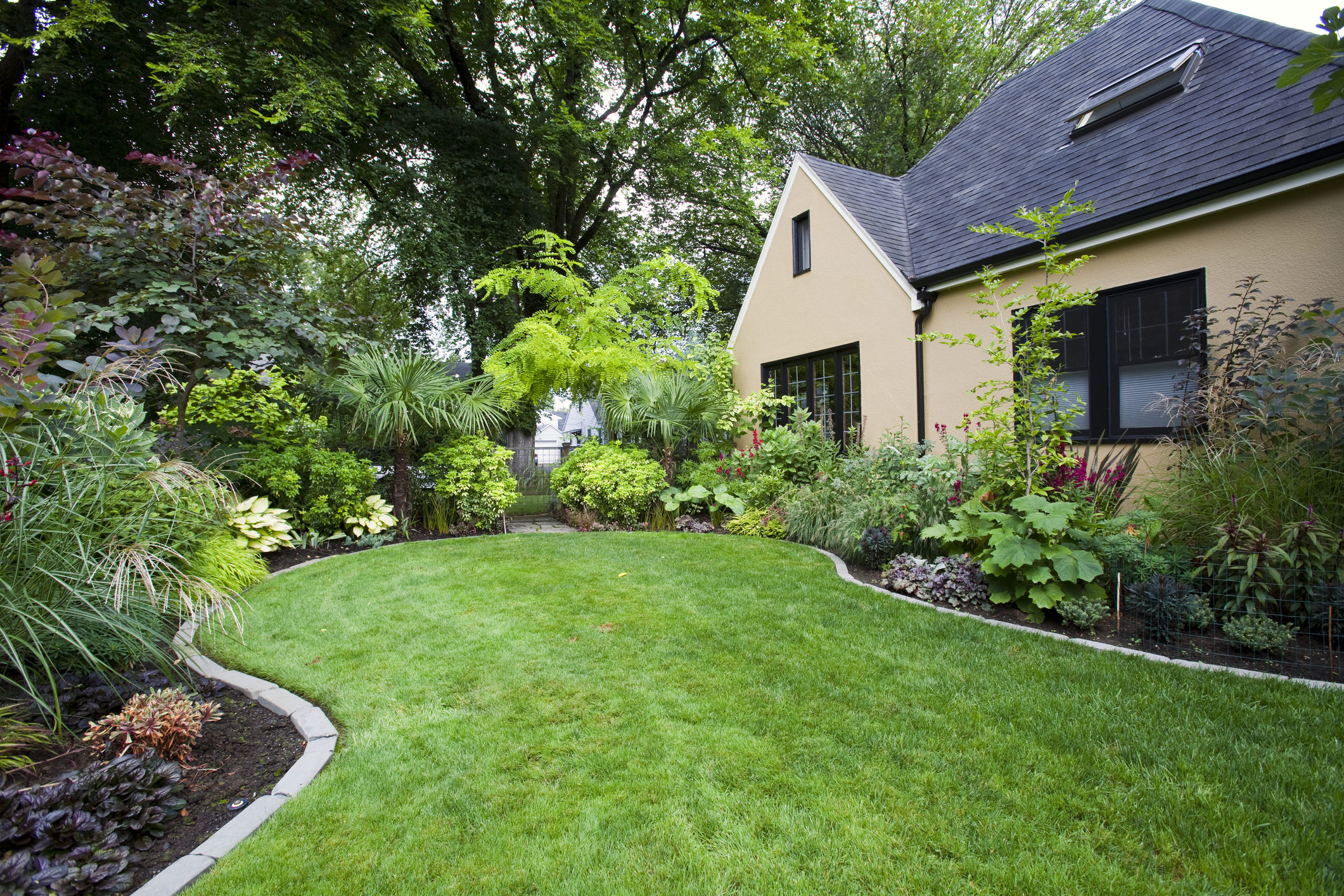
Learning how to level a yard is a vital backyard maintenance step whether you’re landscaping the entire space, preparing to lay a patio or deck, or rescuing a bumpy lawn.
Bumpy lawns can be unsightly and make it tricky to mow your lawn, are a trip hazard and can ruin the aesthetics of your garden. A level lawn is also a really important factor for drainage; holes and low areas can collect water which may cause lawn disease.
So, before you investigate garden landscaping ideas, follow this step-by-step guide to leveling your bumpy lawn.
How to level a yard: what to consider
The best way to level a garden depends on the garden’s design, and how uneven or sloping the space is. You may just want to get rid of lumps and bumps in the lawn so it looks its best, is suitable for sitting or lying out on and so kids can play on it. A flat lawn is easy to mow, and rain will be absorbed evenly, making the grass healthier.
Alternatively, you may want to construct a patio or deck. If that’s the case, you’ll need to start from a level surface to build your new garden feature.
Of course, your garden may be a sloping one, leaving you with space you can’t easily use. If that’s the case leveling is imperative if you’re to create space for all sorts of garden activities, and to make tending the plot much more straightforward.
If you don't want to do the job yourself, you can outsource it, but find out what the cost to level a yard is first.
How to level a lawn
Topdressing is the easiest and least onerous approach to leveling out lawns with uneven areas, using a thin layer of leveling mix (made up of soil, compost, and sand). You will need:
- Lawnmower
- Trowel
- Rake or dethatcher
- Sand (medium particle size)
- Top soil
- Compost
- Broom
- Hose
- Shovel
- Bucket
- Flat spade or lawn edger
- Grass seed
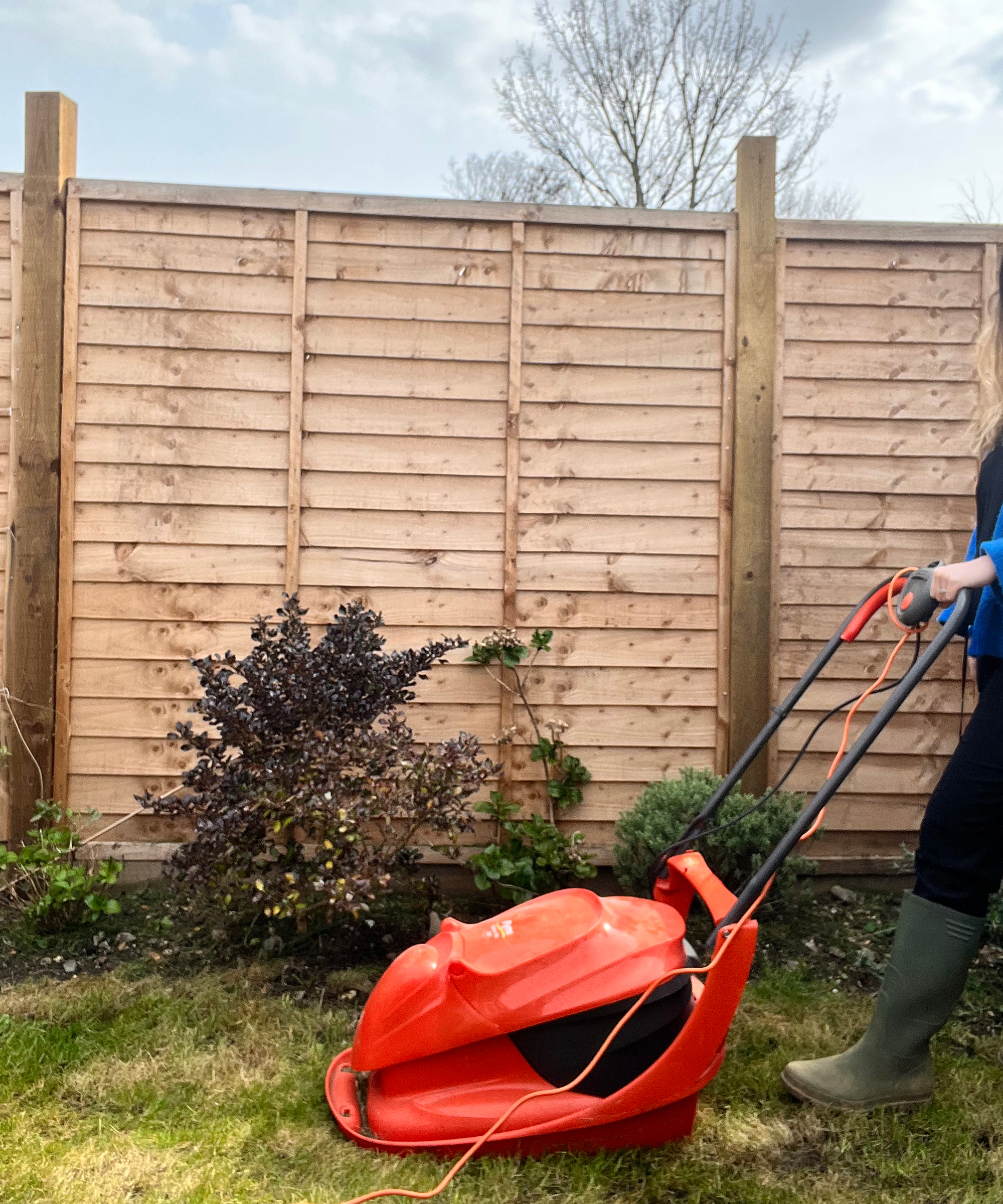
1. Mow the lawn
Mow the lawn at the lowest setting with the best lawn mower – remove the majority of excess grass.
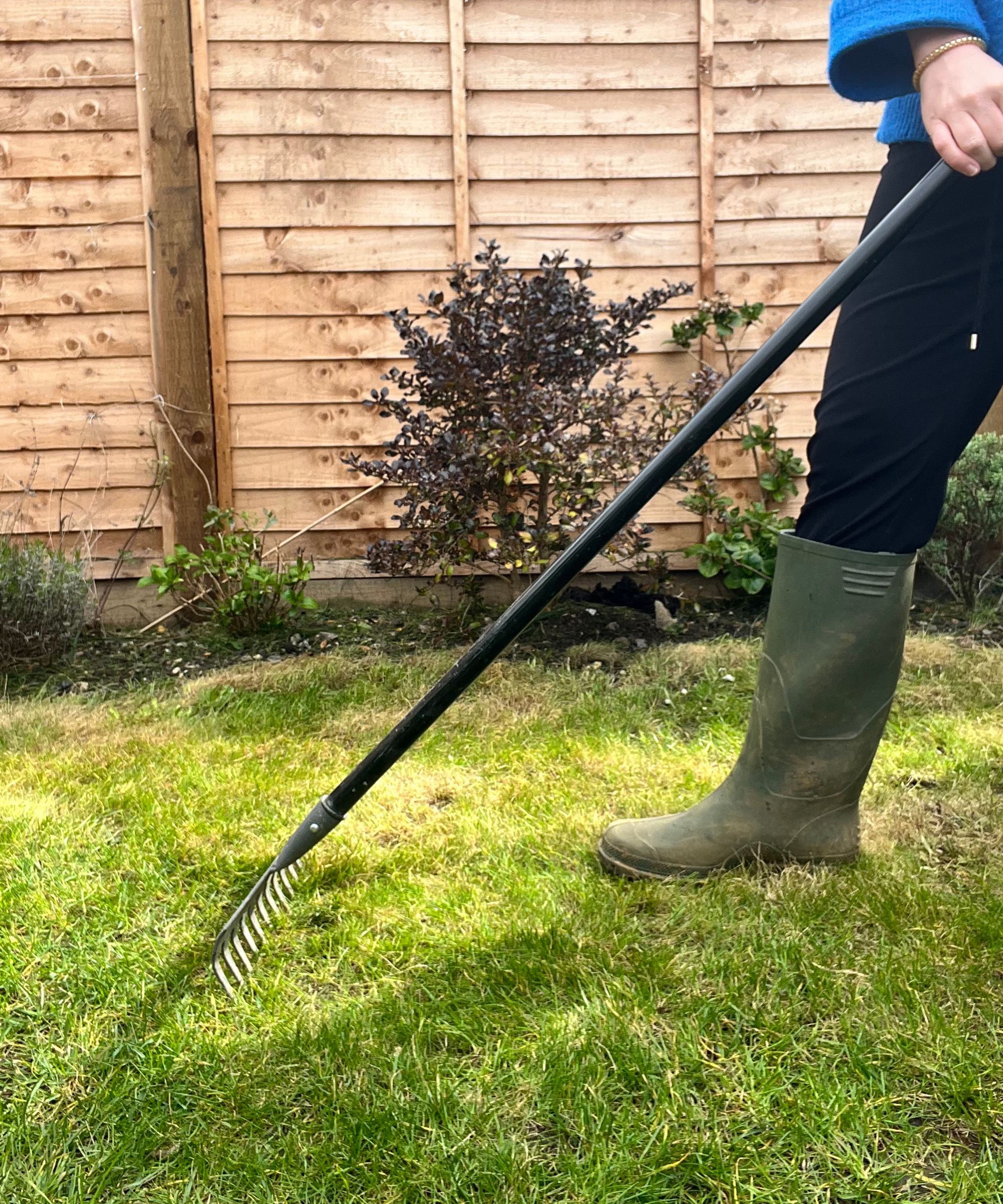
2. Dethatch
Dethatch your lawn with a garden rake or dethatcher. Thatch is a mix of dead and living plant material that forms a layer at the base of grass, the cross-section where it meets the soil. A thin layer can be beneficial to lawn health but too much (often caused by poor soil aeration and drainage) can cause root problems and difficulty mowing. Dethatching can help restore lawn health.
Check your thatch before dethatching by digging up a small wedge of grass and soil with a trowel, anything over a couple of inches needs thatching. Thoroughly rake the grass to remove thatch then clear all debris.
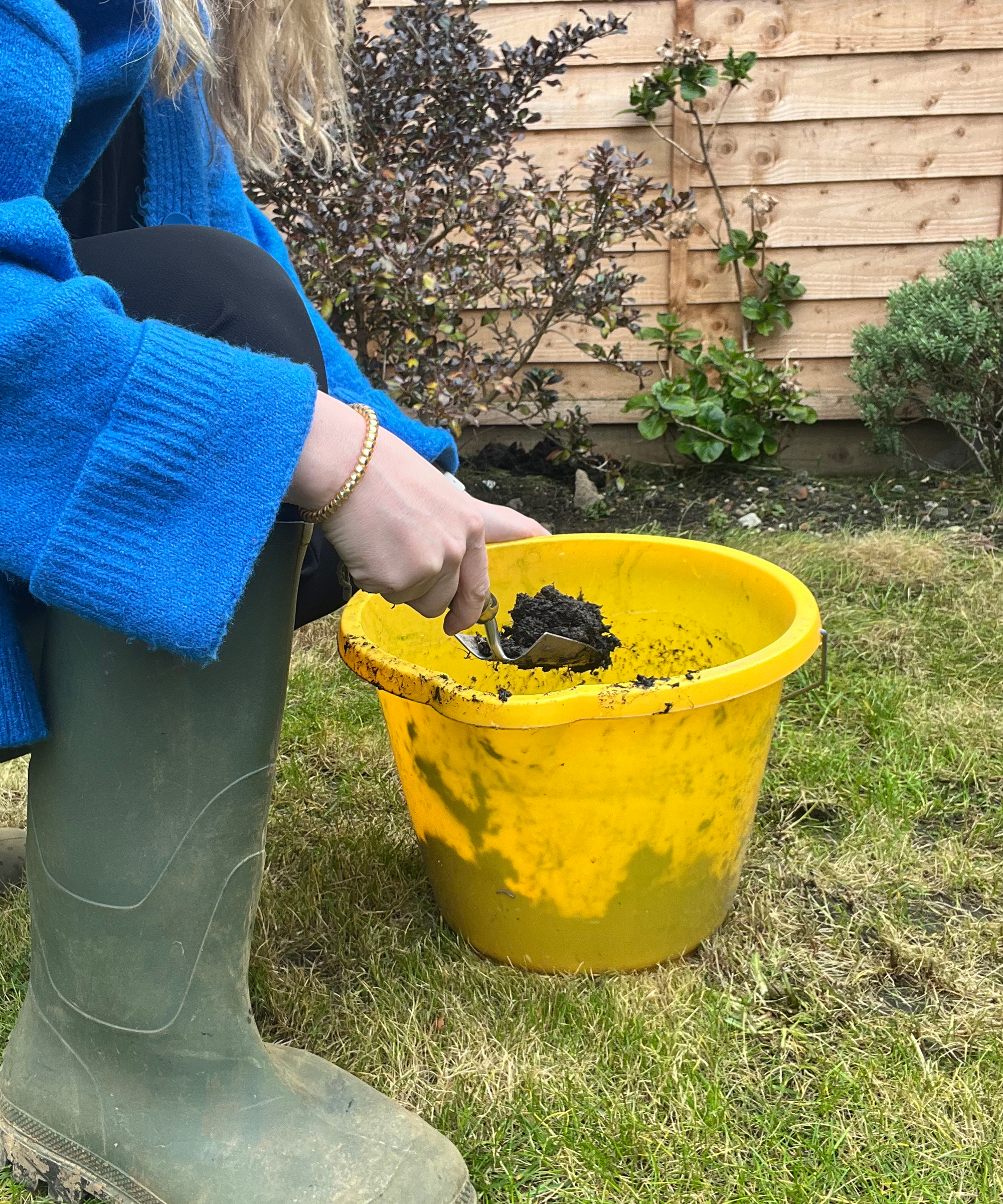
3. Make a leveling mix
In an old bucket or wheelbarrow, mix up some leveling mix, you can buy this premixed or mix it yourself using 40% fine sand, 40% topsoil, and 20% compost. The sand provides good drainage, and the compost adds nutrients to the soil to promote grass growth.
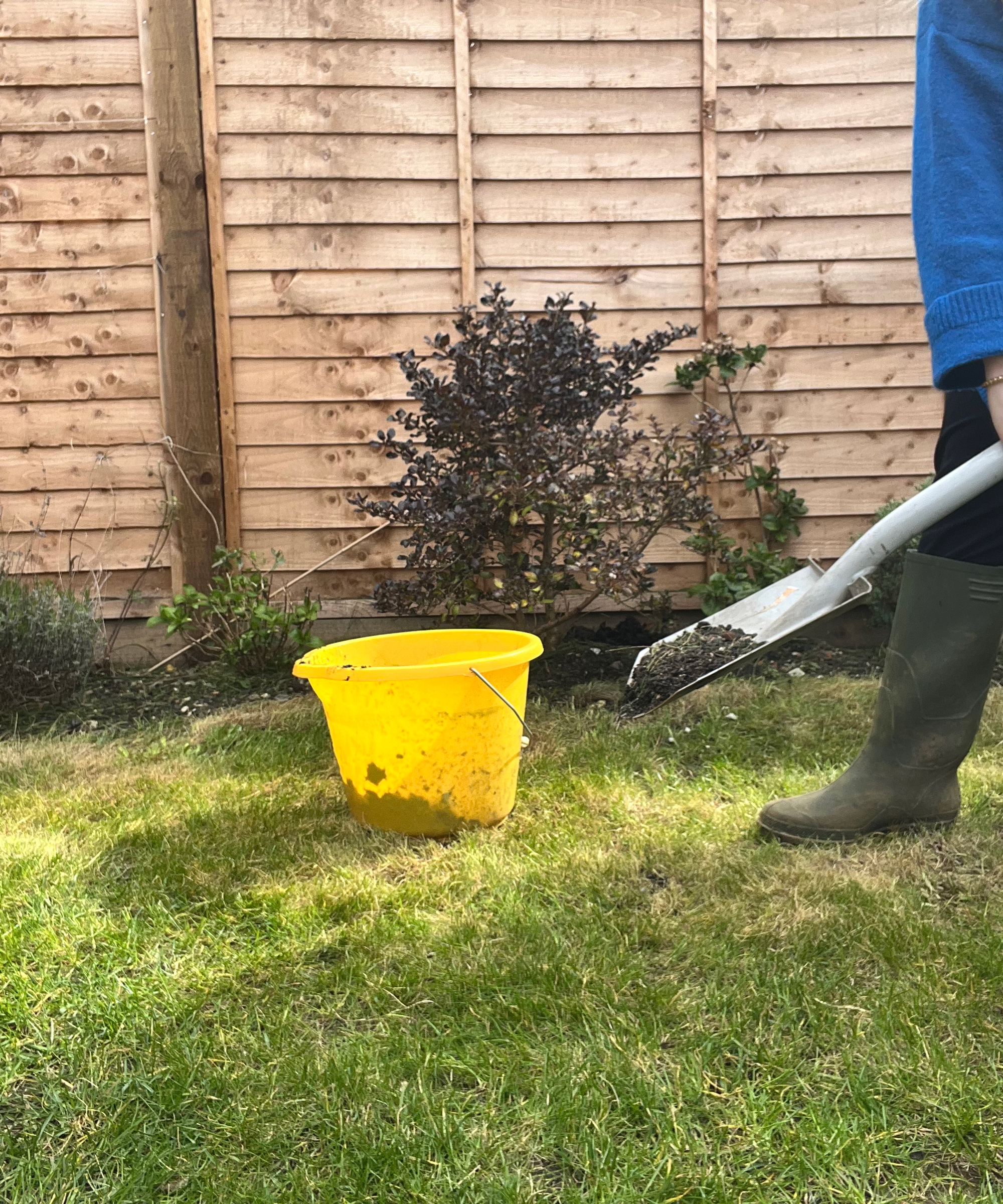
4. Apply mixture with a shovel
Apply the mixture on top of the low areas with a shovel taking care not to add more than half an inch because anymore can smother the grass. Rake to spread the mixture out evenly.
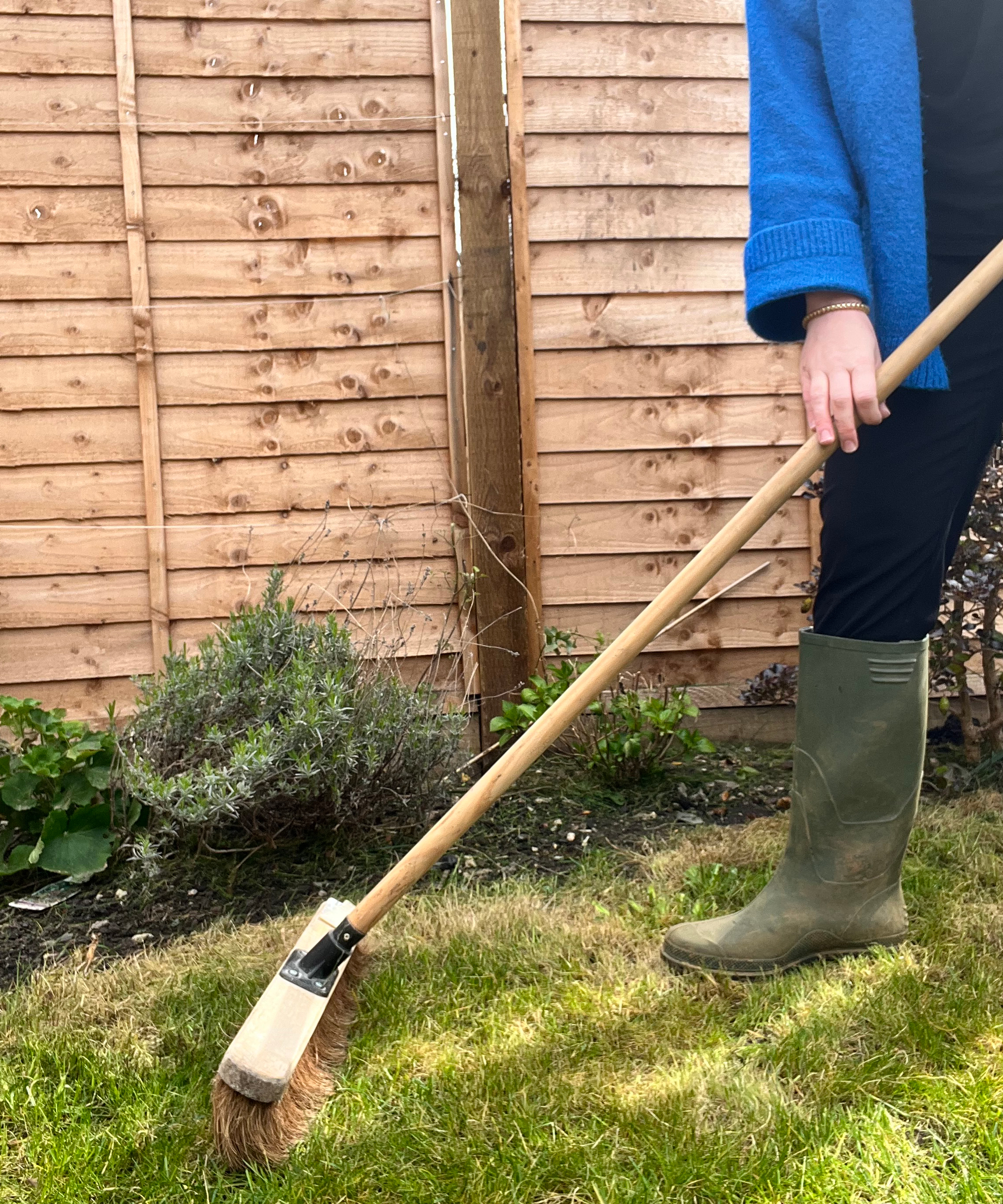
5. Brush the grass with a broom
Brush the grass back and forth with a broom; this works in the leveling mix down whilst at the same time, lifting the grass blades up to make sure the grass isn’t covered with soil. Water the area lightly, taking care not to overwater as this can wash away the leveling mix. Monitor progress (giving the grass a chance to recover). Repeat if needed
Top tip: You can level out any small bumps (less than 1 inch) by stepping on them; it's best to do this in Spring when the grass is soft.
6. Level out larger areas
To level out larger sunken areas (more than half an inch) you will need a different approach. Mow the lawn and dethatch as outlined above. For any larger patches, you can remove the turf patch by cutting along the sunken area with a flat spade or lawn edger, taking care to protect the roots. Spread a layer of topsoil into the hole, watering slightly as you build it up to the lawn level and then replace the turf patch, pressing the grass back into place with your hand or foot.
7. Level out bumps and lumps
For lumps, you’ll need to carefully lift the turf, then remove the soil below until the area is level with the rest of the lawn. Lay the turf back down and compact it afterward.
8. Reseed if necessary
For anything bigger than two inches deep you should start again rather than try to salvage the grass. Fill the plot with a good soil mix and lay new grass seed. Leave for two days, then add grass seed and a light layer of topsoil. Water as required.
9. Add terraces to a sloped garden
The best way to level a sloping garden is to construct terraces within the garden to create level areas. For gentle slopes, timber retainers can be used to form small, stair-like terraces. In this case, moving the soil around the garden is feasible, and it can be a DIY job.
10. Add retaining walls to steep slopes
For steeper slopes, retaining walls will be required to keep the soil in place, and the soil should then be piled up behind them. Retaining walls can be attractive features and may be formed with materials such as bricks, stone, sleepers, gabions – wire enclosures filled with stones – and special concrete blocks.
We’d recommend calling in a professional landscaper to do this job as the retaining walls must be strong; you may even require a structural engineer in addition to specifying the design of the wall. If walls are not correctly constructed for your particular plot, they can collapse with damaging and expensive results.
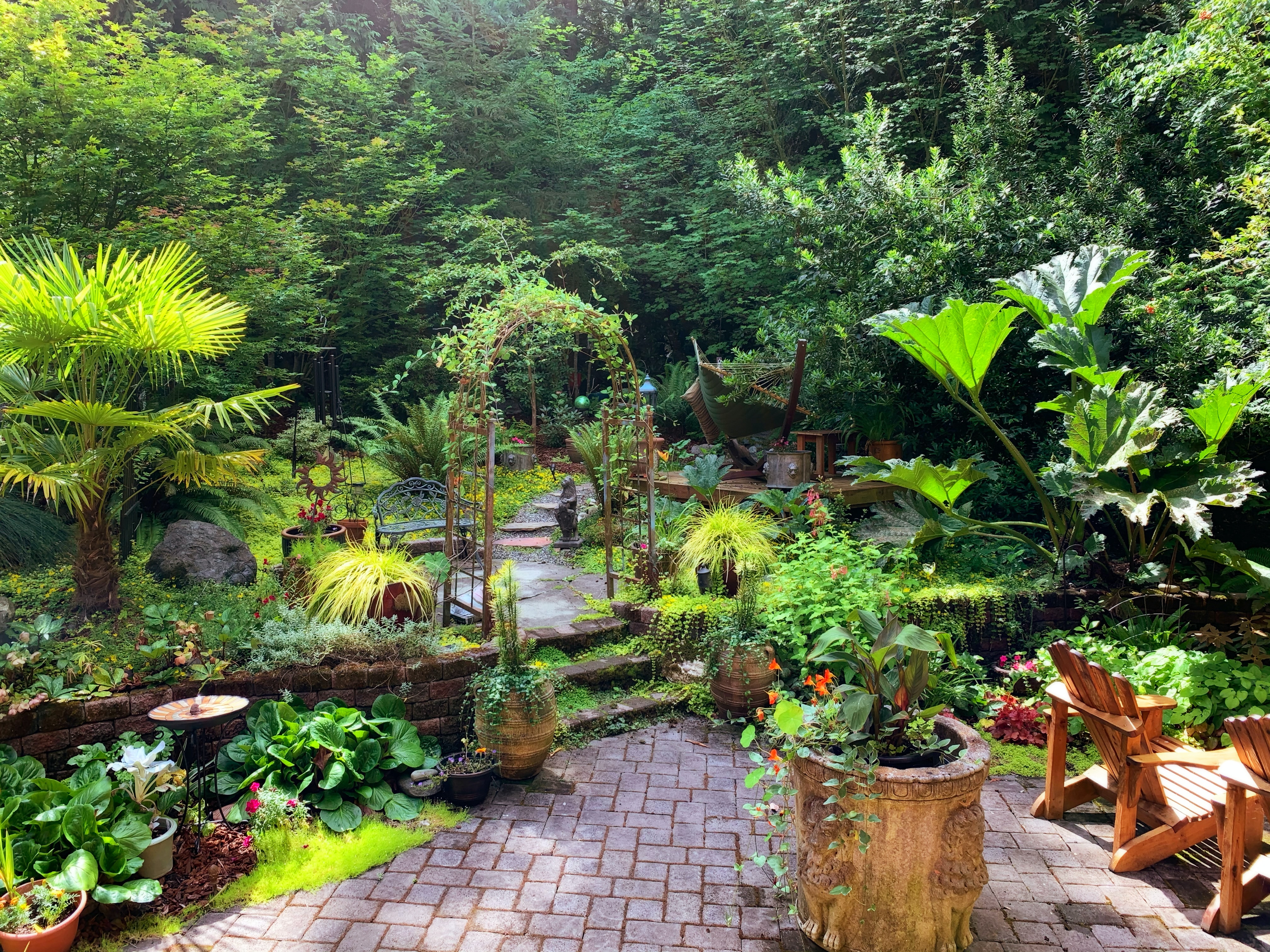
How to regrade a yard
If you're thinking of installing a swimming pool, you'll need to regrade your yard first. Before grabbing a shovel, you want to find and mark the location of any underground utility lines. You may think you’re only removing the top layer of grass, but it’s better to be safe before unearthing a power or gas line.
You should also check with your local municipality to see if you need any permits for this job. Blythe Yost, landscape architect and CEO of Tilly, an online landscape design company, says that 'most municipalities have a soil movement permit requirement,' depending on the extent of the job. For example, if you’re changing the grade enough to require a retaining wall, you probably need a permit.
What's the best way to level an uneven yard yourself?
Leveling a bumpy lawn can be tackled at home, the best tip is to do this in spring when the ground is soft. Start with small lumps (less than one inch), using your foot to press them down then fill any small animal holes with garden soil, compressing with your foot and watering; in time the grass should grow back over them. For larger lumps mow your lawn and rake it to remove thatch, mix a topdressing with some sand and garden soil (at a ratio of 40% sand to 60% soil) and fill any lumps, raking even, brushing with a household broom to work it into the soil and watering to finish.
How can I level my yard cheaply?
You can level your yard yourself on a budget, for next to nothing, using a rake, play sand and some soil from your yard. Firstly, level any small bumps (under one inch) with your feet, making sure the ground is moist when you step on them. Any animal holes can be leveled by filling the soil back in with soil from your yard and then topping up with topsoil; if they’re small the existing grass should grow over them, for any larger holes you can sprinkle some grass seed if you have it and water.
For mildly uneven areas that require more work, topdressing is easiest. Once you’ve mowed the lawn, mix together some fine sand with some compost from your yard (at a ratio of 40% sand, 60% soil) and apply it to the low areas evenly. Rake even if you have one and run a household broom over it to work it into the grass, water and monitor progress. Repeat if needed.
Join our newsletter
Get small space home decor ideas, celeb inspiration, DIY tips and more, straight to your inbox!

Sarah is a freelance journalist and editor writing for websites, national newspapers, and magazines. She’s spent most of her journalistic career specialising in homes – long enough to see fridges become smart, decorating fashions embrace both minimalism and maximalism, and interiors that blur the indoor/outdoor link become a must-have. She loves testing the latest home appliances, revealing the trends in furnishings and fittings for every room, and investigating the benefits, costs and practicalities of home improvement. It's no big surprise that she likes to put what she writes about into practice, and is a serial house revamper. For Realhomes.com, Sarah reviews coffee machines and vacuum cleaners, taking them through their paces at home to give us an honest, real life review and comparison of every model.
-
 The 7 flowers to plant in August, according to gardening gurus
The 7 flowers to plant in August, according to gardening gurusKnowing what flowers to plant in August isn't always so clear-cut. But that's why we called in help from pro planters — here's what they said to pot.
By Becks Shepherd Published
-
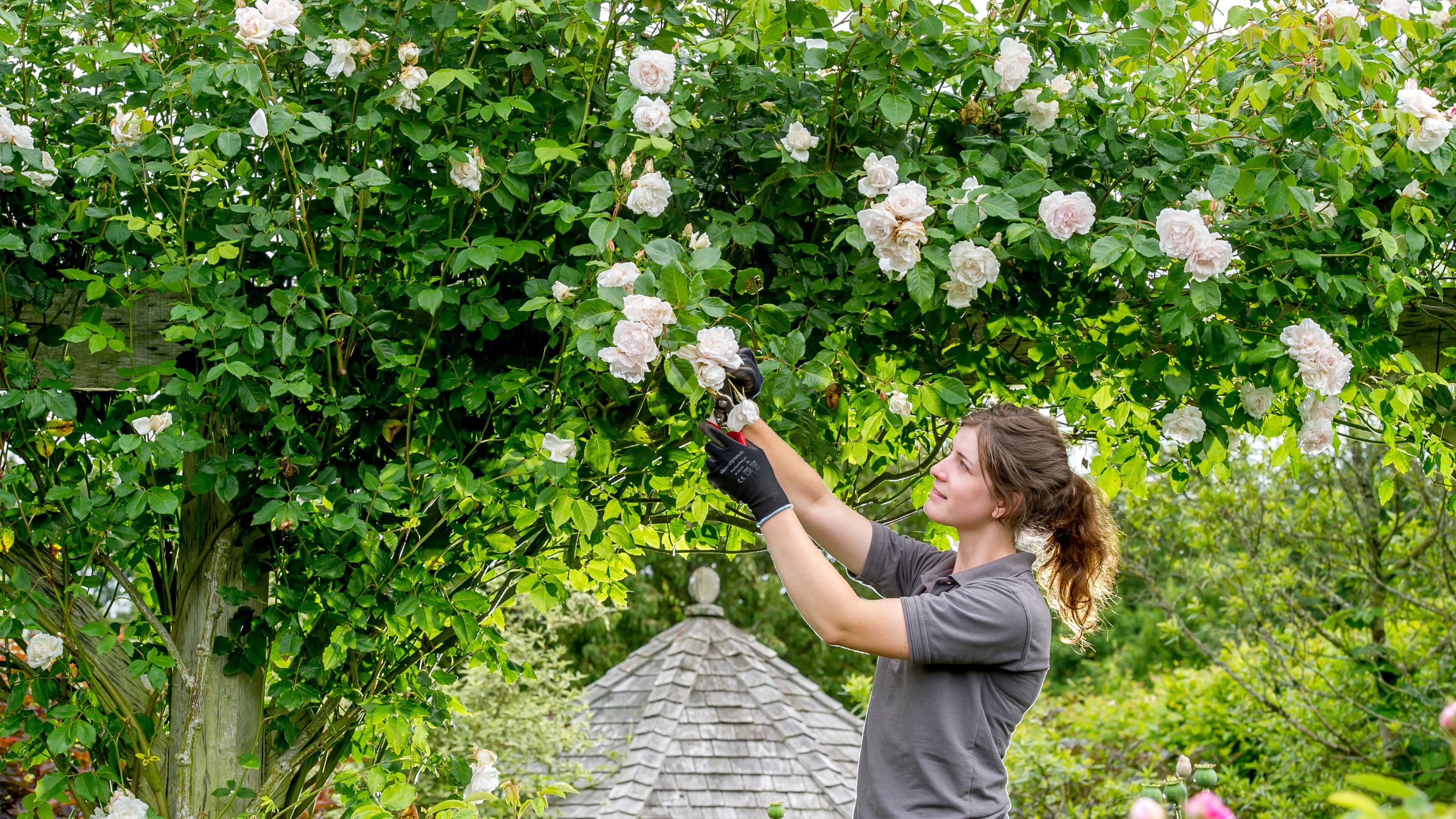 The 7 plants to prune in August — and the 2 pieces of greenery you shouldn't touch
The 7 plants to prune in August — and the 2 pieces of greenery you shouldn't touchWondering what plants to prune in August? We asked a gardening expert for their top tips plus info on what pieces of greenery to avoid pruning this month
By Becks Shepherd Published
-
 Do you need to deadhead azaleas? Top tips for pruning these flowering shrubs
Do you need to deadhead azaleas? Top tips for pruning these flowering shrubsWondering whether you need to deadhead azaleas? We asked a gardening expert for their top tips for looking after these blooms
By Becks Shepherd Published
-
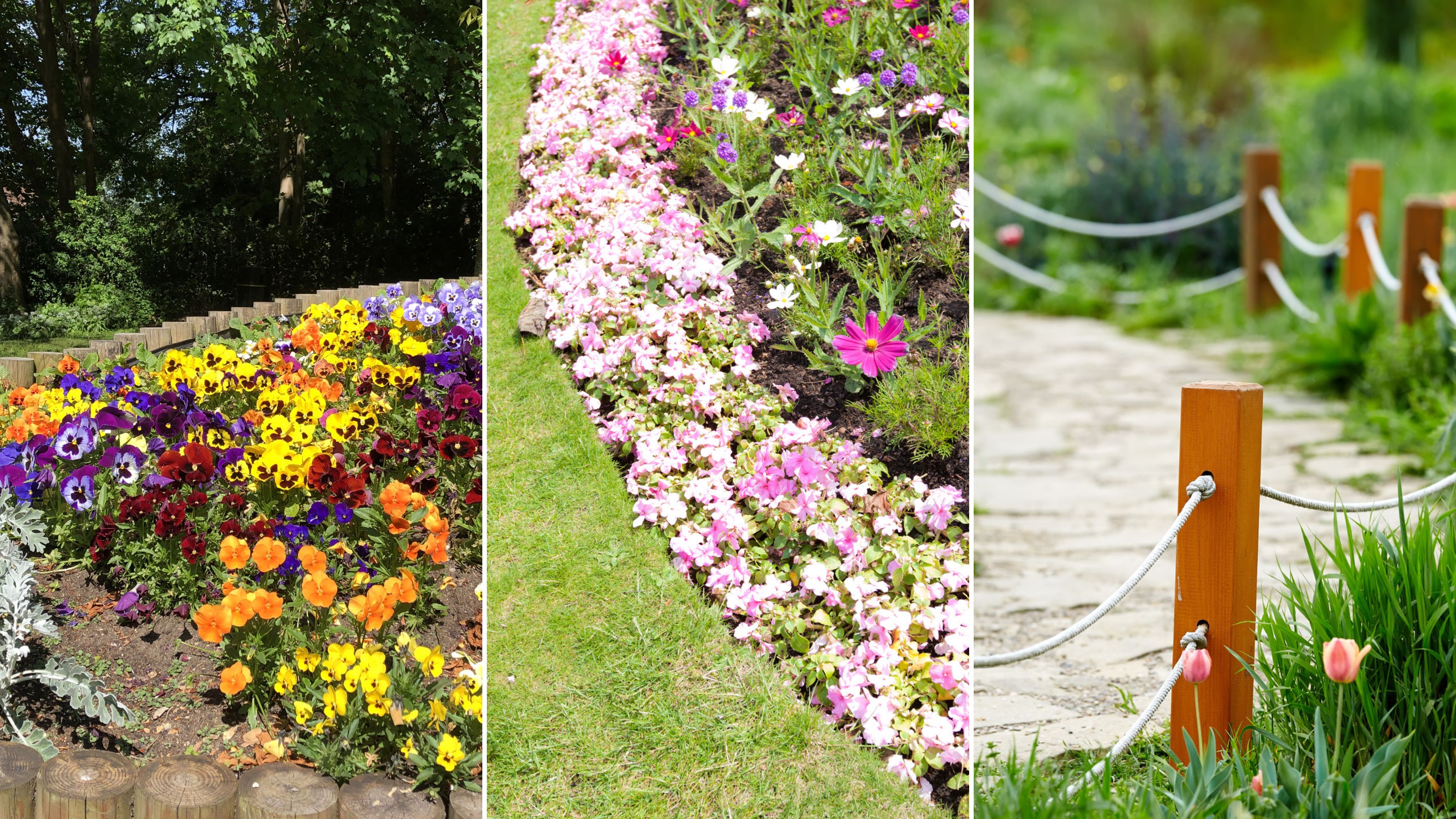 14 lawn edging ideas that will add definition and style to your backyard
14 lawn edging ideas that will add definition and style to your backyardWant to neaten up your lawn with lawn edging ideas? From fresh flowers to laidback bricks, we've scouted out materials and styles that look brilliant
By Eve Smallman Published
-
 Which houseplants are toxic to dogs? Vet experts pinpoint problem plants and solutions
Which houseplants are toxic to dogs? Vet experts pinpoint problem plants and solutionsWondering Which houseplants are toxic to dogs? We spoke to vets about the problematic leafy greens, what they trigger in dogs, and how to find a solution
By Danielle Valente Published
-
 How to attract hummingbirds to your backyard, according to ornithologists
How to attract hummingbirds to your backyard, according to ornithologistsTrying to figure out How to attract hummingbirds to your backyard? These ornithologist-backed tips will guarantee you visitors in no time
By Danielle Valente Published
-
 Does hydrangea bloom every year? Pros spill the dirt on the "garden favorite" and when to expect it
Does hydrangea bloom every year? Pros spill the dirt on the "garden favorite" and when to expect itWondering, "Does hydrangea bloom every year"? We asked the pros all about the garden favorite and how often to expect them — here's the dirt.
By Danielle Valente Published
-
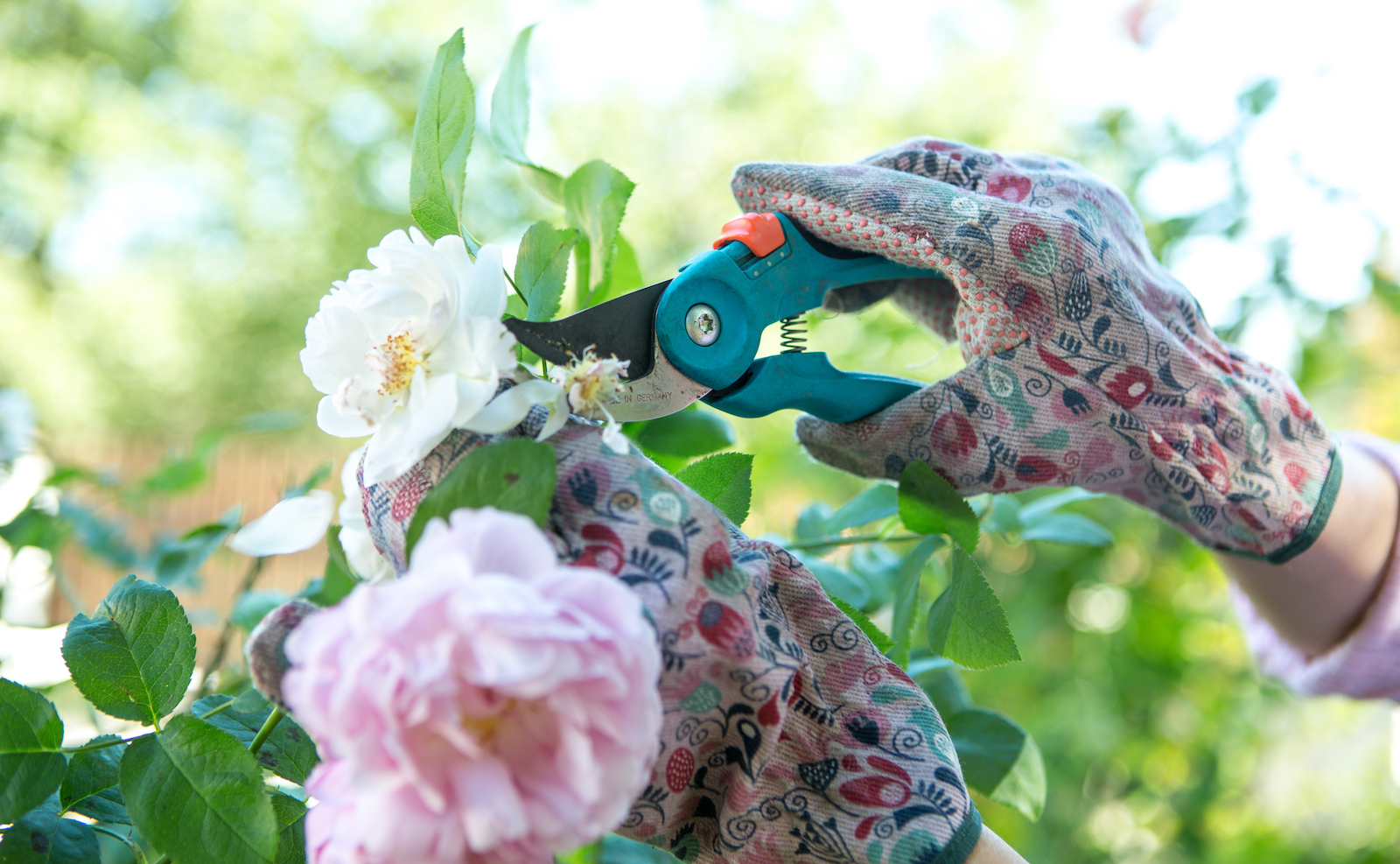 What to prune in spring — experts reveal how to get a lush, full garden
What to prune in spring — experts reveal how to get a lush, full gardenCurious what to prune in spring? We asked gardening experts for their top tips for a luscious, thriving garden
By Danielle Valente Published
